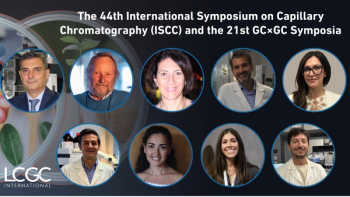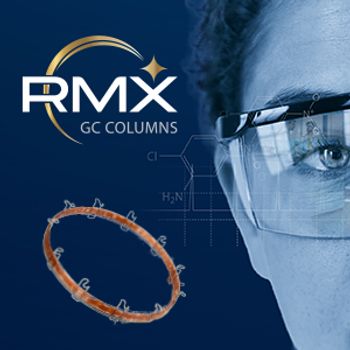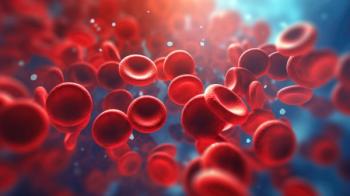
- LCGC North America-07-01-2016
- Volume 34
- Issue 7
How to Optimize the Key Variables in GC Analysis: GC Columns and Detectors
How to optimize the key variables in GC analysis–GC columns and detectors
Columns
Selecting a gas chromatography (GC) column can be a daunting task. It may seem like there are a never-ending number of phase chemistries, or an inordinate number of column geometry options. However, when choosing a column for a new application (or to improve an existing one) there are some simple rules that can be followed. To select an appropriate phase chemistry use the principle of “like dissolves like” wherever possible and match the analyte and stationary-phase polarities. Remember that there are only five chemistries that need to be considered (PDMS, phenyl, cyanopropyl, trifluoro, and polyethylene glycol [PEG]). To increase retention or selectivity based on a particular analyte-stationary phase interaction, increase the amount of the functional group within the phase (that is, move from a 14% to a 35% cyanopropyl phase). Use the least-polar phase possible as more-polar phases bleed more. A 5% phenyl column should be used to screen unknown samples; analyte retention and selectivity can then be assessed and a more appropriate phase chosen if necessary. A 5% phenyl, 50% phenyl, 14% cyanopropyl, and a WAX (PEG) column cover the widest range of stationary phase polarities and interactions in the fewest number of columns. To select column dimensions, consider the number and types of analytes that are being analyzed. Column length should reflect the number of species that need to be separated in the sample (two components, use a 10-m column; hundreds of components use a 60- or 120-m column). Use smaller internal diameter columns when the separation is dependent upon the stationary phase selectivity, that is, when sample components are very similar or when multiple components need to be separated in shorter time frames. Use phase ratios <100 for highly volatile, low-molecular-weight analytes. Use phase ratios >400 for high-molecular-weight analytes or for trace analysis. Use thin films (0.1–0.25 µm) when increased sensitivity is required or when analytes are relatively involatile. Use thicker films (1–5 µm) when dealing with volatile analytes, analytes at high concentration, or when peak shape is poor.
Detectors
Selecting a detector based on your analytes and analysis type can afford more specificity, however, the detector must also be optimized to get the best possible analysis.
Flame ionization detection (FID) is the workhorse of GC detection systems. This detection method responds to compounds that contain carbon and hydrogen (so most compounds that will be analyzed). Gas stoichiometry is the most important feature for optimum FID operation, and a ratio of 1 (carrier):1 (H2):10 (air) should be maintained. Using increased H2 and air flows allows for better handling of solvent peaks and high concentration components, while lower gas flow rates result in lower background noise and better detection limits. Another universal detector, which is primarily used for gas analysis, is the thermal conductivity detector. This detector will respond to any analyte that has a difference in thermal conductivity from the carrier gas. The detector is susceptible to changes in the detector body temperature, filament temperature (and, hence, current supplied), and the nature and flow of the carrier gas. Therefore, all of these parameters should be kept as stable as possible.
For greater specificity, detection methods such as the nitrogen–phosphorus detection (NPD) and electron capture detection (ECD) can be used. As the name would suggest, NPD exhibits enhanced sensitivity toward nitrogen- and phosphorus-containing compounds, meaning that they can be detected without interference from C and H containing analytes. NPD is an ionizing detection system like FID, but it operates using a different principle-mainly that there is no flame and instead a rubidium silicate bead is resistively heated to emit thermionic electrons that migrate to the collector electrode forming the background current. Operating at higher temperatures (260–350 °C), at the lowest acceptable bead power (start at 2 V and increase in 10 mV steps if unsure), and interrupting the hydrogen flow when the solvent peak elutes and during oven cool down can help to extend bead lifetime. Hydrogen flow must be low enough; otherwise nitrogen response will be zero. NPD is mass–flow sensitive and it is recommended that constant flow operation is used to avoid drifting baselines. ECD is particularly sensitive to electron capturing species such as halogens. When operating an ECD system, the detector gases should be clean (99.999%+) and dry because both oxygen and water are electronegative and contribute to noisy baselines. Chromatographic peaks obtained from a dirty ECD system have a distinctive negative dip either before or after each peak. The sensitivity of the detector can often increase as detector performance deteriorates, as well as exhibiting a deviation away from the expected linear range, especially at higher analyte concentrations. A contaminated ECD system can be cleaned using a hydrogen bake out; however, more intensive maintenance may have to be carried out by the manufacturer because of the radioactive 63Ni source in the detector.
Get the full tutorial at
Articles in this issue
over 9 years ago
How Does It Work? Part III: Autosamplersover 9 years ago
Sealing it with Septaover 9 years ago
Microflow LC–MS-MS: The Past, the Present, and the Path Forwardover 9 years ago
Vol 34 No 7 LCGC North America July 2016 Regular Issue PDFNewsletter
Join the global community of analytical scientists who trust LCGC for insights on the latest techniques, trends, and expert solutions in chromatography.




